
1
Full length view of rifle.
| 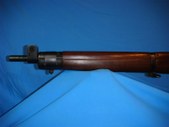
2
Rifle front sight, nose-caps and front barrel band.
| 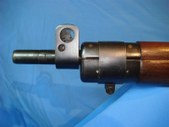
3
Front sight protector, front band and nose-caps.
| 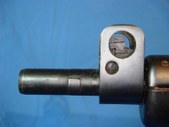
4
Front sight protector and front sight.
|
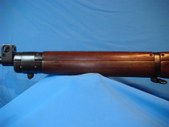
5
Front handguard.
| 
6
Rear barrel band and sling swivel.
| 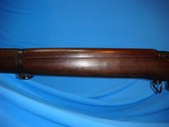
7
Rear handguard. Note the target sling swivel at the kingscrew position.
| 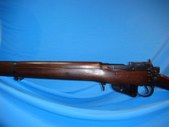
8
Overall view of action area.
|
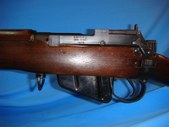
9
Action veiw. Note the target swivel at the kingscrew position.
| 
10
Magazine and stamped & welded trigger guard, used on all Longbranches from mid-1944 onward.
| 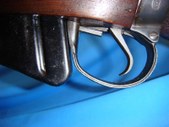
11
Stamped and welded construction trigger guard.
| 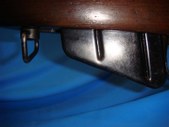
12
Target swivel at kingscrew.
|

13
Receiver rollstamp. 1949 Longbranch CNo.4Mk1* model.
| 
14
CNo.4Mk1* model refers to the Canadian variant of the No.4Mk1* which differed mainly from the Savage made No.4Mk1* by the adoption of a stamped and welded trigger guard assembly by Longbranch in mid-1944. This rifle was made in 1949, an uncommon year.
| 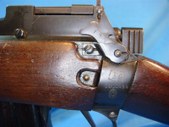
15
Rear receiver ring and late-type Longbranch safety lever.
| 
16
Rear receiver ring and markings.
|

17
Late-style Longbranch safety lever.
| 
18
The 5G on top of the receiver's serial number means the barrel has 5 grooves. Rifles with barrels with 4 grooves are therefore marked 4G. Rifles with barrels with 2 grooves are not marked. (Feedback by Vincent)
The "C inside and oval" denotes ownership by the DCRA indicating this is an early .303 caliber target rifle that once belonged to the DCRA Range at Connaught in Ottawa.
| 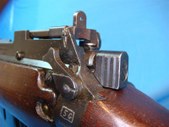
19
Cocking piece and rear sight view.
| 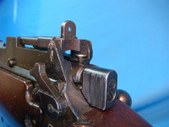
20
Cocking piece and rear sight view.
|
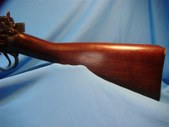
21
Buttstock.
| 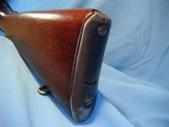
22
Buttplate. Note it is made of steel as opposed to the earlier Zamak buttplates used at Longbranch.
| 
23
Top view of front sight.
| 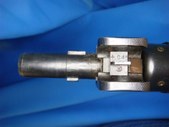
24
Note the Canadian Arsenals logo on the +.045" front sight insert. Canadian Arsenals marked parts began to appear in new rifle production at Longbranch in 1949.
|

